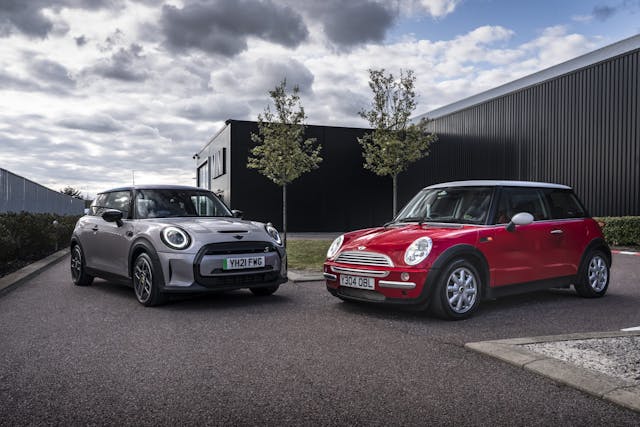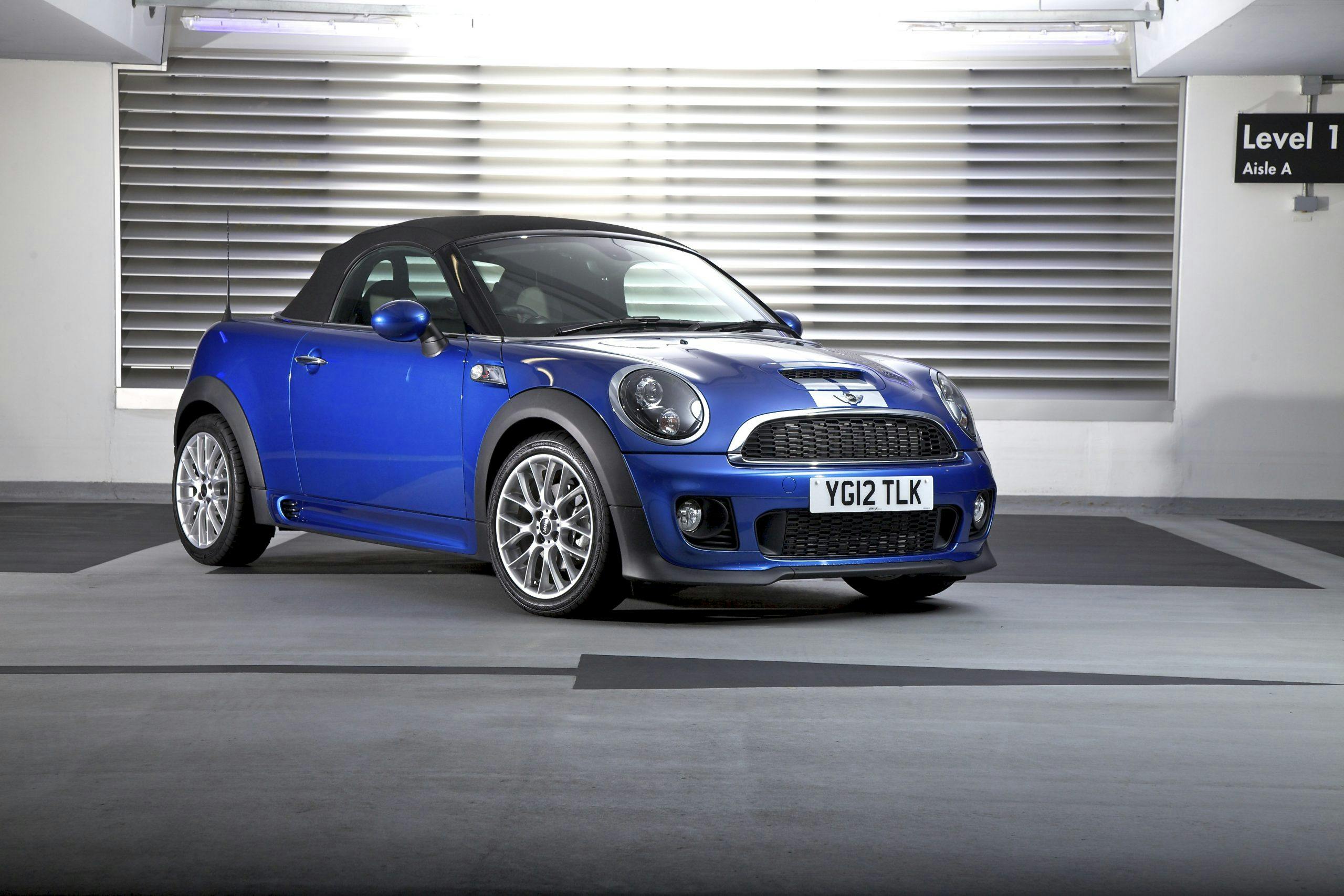Media | Articles
20 years of milestones and misadventures with the “new” Mini
Time certainly flies when you’re having fun. It’s hard to believe that a full two decades have passed since BMW relaunched the Mini in 2001—not just as a new model, but as a brand in its own right. Look at the Mini lineup today and you’ll find seven models ranging from a still-relatively-mini Hardtop to the rather-more-maxi Countryman. Your Mini can be an electric eco-warrior or a racetrack weapon, a droptop or even a kind of wagon.
By 2007 over one million “new” Minis had been sold, and at the end of 2020 the total tipped over five million. It took the original Mini 40 years reach the same figure. Clearly, this little car has been a huge success for BMW, but there have been a few bumps in the road. Along with the many milestones there have been Mini misadventures as well. Let’s take a look.
Mini milestones
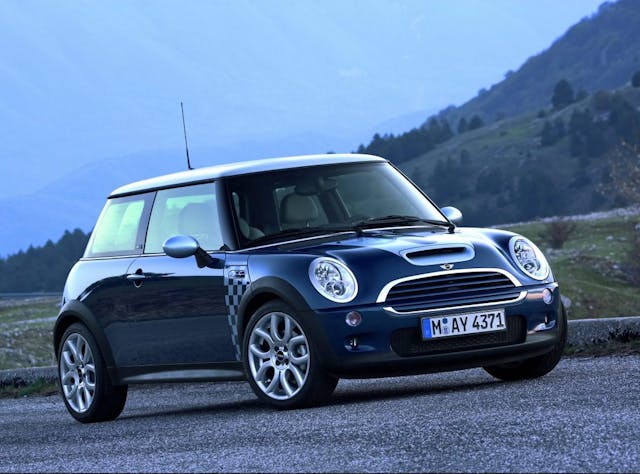
2001: The BMW Mini
With 40 years of fandom behind the original, replacing the Mini was never going to be easy. British Leyland had been trying to come up with something suitable to replace Sir Alec Issigonis’ magnificent design for decades, but it took his great-nephew Bernd Pischetsrieder, the boss of BMW, to make it happen.
Having purchased Rover, Pischetsrieder immediately pushed forward with plans for a 21st-century Mini. The final design came from Frank Stephenson. Unashamedly retro, it managed to capture the essence of the original and, critically, to attract buyers. The first car, codenamed R50, was massive compared to a 1960s’ Mini but still relatively compact. There was room enough for four inside (but only just) and, like the OG Mini, it was fabulous to drive. The engine, a 1.6-liter four-banger sourced from Chrysler, was pretty agricultural, but the Mini was given a fruity exhaust note, a five-speed manual transmission (with an auto on the options list) and, most importantly, a brilliant chassis. The U.S.-bound, 117-hp Hardtop Cooper was a blast. Well, at least until the Cooper S came along with a supercharger bolted on. Yes. A supercharger. On a Mini. No wonder it was voted North American Car of the Year in 2003.

2005: John Cooper Works
The name John Cooper has been associated with Mini since 1961, so it was a no-brainer for John’s son Michael to turn his attentions to the reborn Mini brand. John Cooper Works was founded in 2002, launching one dealer-fit kit that added around 10 hp to the Cooper and a second that boosted the supercharged Cooper S to over 200 hp. BMW took notice, buying the rights to the name in 2005 and ultimately purchasing the company two years later. In 2005 the John Cooper Works package became a factory option, offering 213 hp and an aggressive body kit as a send-off for the last run of supercharged cars. Today you can order a JCW in almost every flavor of Mini, with the most powerful All4 versions of the Clubman and Countryman packing an alarming 301 hp.
Marketplace
Buy and sell classics with confidence
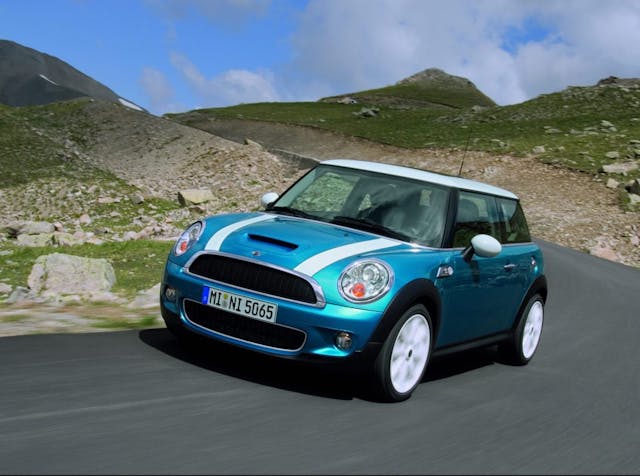
2006: Reborn again
BMW reimagined the Mini for a second time in 2006, and the result boasted more than a facelift. The R57 had a new Peugeot-Citroën-developed Prince engine, with the Cooper S version receiving a twin-scroll turbo to replace the wonderful belt-driven whine of its supercharger. The Mini grew a little in every direction, and remodeled front seats meant those in the rear were slightly less squeezed. Electric power steering was installed but the car lost little, if any, of its agility. The Cooper S now had 175 hp as standard with an overboost feature to aid in a 0–60 mph sprint time of just 6.7 seconds.
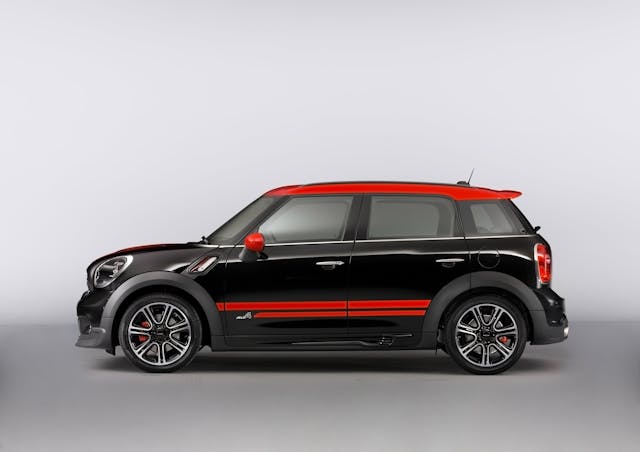
2010: The Countryman cometh
The Mini brand expanded—quite literally— with the introduction of the 2010 Countryman crossover. It may have looked like it was wearing a fat suit, but the elevated driving position, improved practicality, and available all-wheel-drive appealed to whole new type of buyer. The Mini could now cope with family life. The Countryman also spawned a brief foray back into rallying, where its heightened ground clearance and extra traction proved handy. It sold well, too, and is now in its second generation.
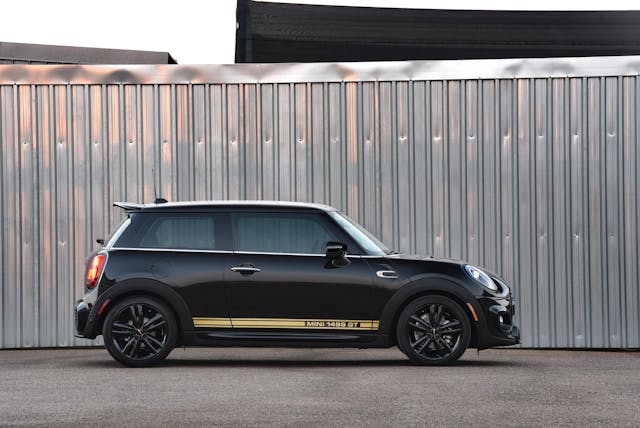
2014: Third time’s a charm
No longer quite so Mini, the current shape model is a full 14 inches longer than the 2002 edition. When it launched in 2014, the third-gen car also brought five doors to the Hardtop for the first time. U.S. models came with a 1.5-liter, twin-turbo three-cylinder in the Cooper and a two-liter version in the Cooper S. It’s still huge fun to drive but even the increased size doesn’t seem to be enough for American buyers; Mini sales are starting to slide.
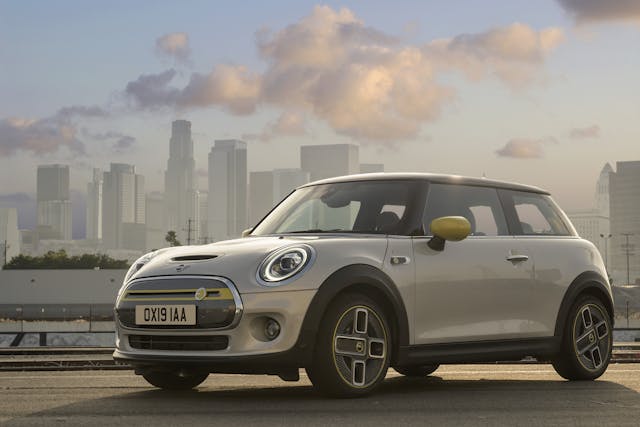
2020 Electric Avenue
Mini actually produced an electric version of its icon back in 2010. Made in limited numbers, it was a rolling testbed for the technology (and the market). Fast-forward a decade and the Mini Cooper SE uses the same powertrain from the BMW i3 only flipped to drive the front wheels. The EPA range is only 110 miles but with 184 hp, the SE will zip to 60 mph in 6.9 seconds, making it almost as quick as a turbocharged Cooper S.
Mini misadventures

The second-generation Mini got over-ambitious and, frankly, a little weird. First there was the 2007 Clubman, another blast from the past. The concept of a Mini estate was cool, but the execution was, er, interesting. The Clubman had one door on the driver’s side and two on the passenger side and, while that was fine for left-hand-drive markets, those that drove on the right side of the road found themselves having to let their children out into traffic. The second generation had a more conventional four-door design.
Also spawned from the R57 were the Mini Coupe and Mini Roadster. Taking the not-exactly-generous headroom off the Hardtop and chopping it down was not a recipe for massive sales. Worse still, BMW’s designers confessed that the Coupe’s styling was supposed to look like a baseball cap worn backwards.

Not that they learned much from the experience, because in 2012 BMW launched the Paceman, a coupe version of the Countryman. The lower roofline and three-door layout managed to make it look even more bloated. Thankfully, it only lasted until 2016.
In your eyes, what was the high point of the “new” Mini in the past two decades? Let us know in the comments.
